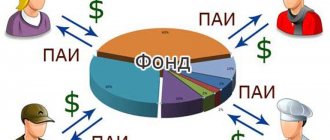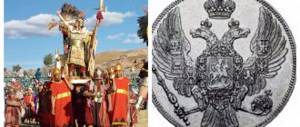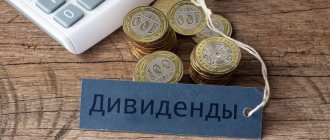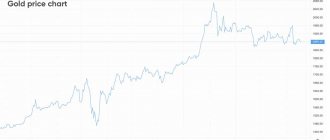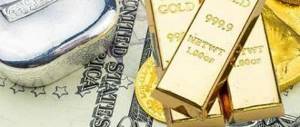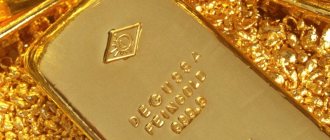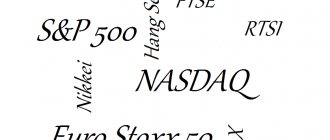Exchange-traded funds (ETFs) aren't just for stocks. There are also various bond ETFs that invest exclusively in fixed income securities. They include investment grade corporate bond ETFs that buy high quality debt from financially strong and stable companies, and as we know, bonds are the safest investment with predictable returns.
Some examples include Microsoft Corp. (MSFT), AT&T Inc. (T) and JPMorgan Chase & Co. (JPM). These companies have high credit ratings, which indicate a low risk of default. For this reason, these bond ETFs can provide a strong defensive addition to investment portfolios.
The world of corporate debt ETFs consists of about 48 different ETFs, excluding inverse and leveraged ETFs. The top-performing investment-grade corporate bond ETF for the second quarter of 2021, based on performance over the past year, is the FlexShares Credit-Scored US Long Corporate Bond Index Fund (LKOR) with FlexShares Credit Rating.
Below we will look at the TOP 3 corporate bond ETFs with the highest reliability rating.
FXGD ETF: what is it and how does it work
The principle of asset diversification as a way to reduce risks is known to every investor. It is necessary to invest capital not in one financial instrument, but in different ones - then a drop in profitability on one of them will not lead to large losses.
But with the practical implementation of this principle, certain problems may arise, for example:
- It can be difficult to understand the variety of assets and which ones are best to invest in.
- A complete investment portfolio will cost a lot.
- With a large number of assets, they are difficult to control.
To solve such problems, ETFs are created - exchange traded funds. These investment funds build a large investment portfolio by purchasing various financial instruments, and then issue their own shares and list them on the stock exchange. Thus, by purchasing ETF shares, an investor immediately invests in several attractive assets.
If you want to replenish your existing assets with gold, you should invest in the FXGD ETF fund. It focuses on the gold price index, the most stable asset.
There is one gold fund trading on the Moscow Exchange - FinEx Gold ETF.
Participants in the process of issuance, circulation and redemption of FXGD ETF shares
| No. | Participant | Functions |
| 1 | Issuer | Issues and redeems ETF shares |
| 2 | Investment manager | Manages the fund's assets |
| 3 | Custodian | Maintains accounting and storage of assets |
| 4 | Administrator | Provides administrative services and prepares reports |
| 5 | Market makers | Supports stock quotes |
| 6 | Index Provider | Licenses use of the index |
| 7 | Exchanges | Organize trading in ETF securities |
| 8 | Auditor | Conducts an annual audit of the fund's activities |
| 9 | Independent controller | Carries out monitoring in the interests of the Board of Directors of the issuing company |
The fund's participants are banks and large companies.
Benefits of FXGD ETF
- The value of the fund's assets is based on the value of gold, which the ETF tracks as closely as possible.
- Reliability of operations is ensured by the Bank of New York and the London Gold Market Association.
- Low share price.
- The risk of arbitrary changes in the difference between the purchase and sale prices of gold is minimal.
- The price difference between buying and selling gold is less than in banks.
- No VAT on the acquisition of assets.
- Low payment for management services - only 0.45% per annum.
- All assets of the fund are owned only by its shareholders.
- Investments are protected from devaluation—a fall in the exchange rate of the ruble against world currencies.
- The price of the precious metal changes less than other exchange commodities, which compensates for losses when the profitability of other financial instruments decreases.
- FXGD ETF shares are available to both legal entities and private investors.
- The transaction can be completed using any broker on the MICEX.
- All transactions with securities are carried out with small commissions.
- Availability of extended assets and grace periods for IIS.
You can see the benefits of FXGD ETF using the video:
FXTP Historical Returns
The new ETF follows the Solactive US 5-20 Year Treasury Inflation-Linked Bond Index and includes 22 bond issues with maturities ranging from 5 to 20 years.
Distribution of FXTP bonds by maturity
Source: Bloomberg, Solactive, FinEx calculations
The index's historical average annual return from the beginning of 2007 through April 30, 2021 was 5% in dollars over the past year - more than 7%. By comparison, the historical return of the Bloomberg Barclays US Aggregate Broad Market Index since 2021 over the past year is 0%.
Historical dynamics of Solactive US 5-20 Year Treasury Inflation-Linked Bond (USD)
Source: Bloomberg, FinEx calculations
In the table below, we compared the key return and risk metrics of the index followed by FXTP with another popular inflation-protected bond ETF (Barclays US Treasury Inflation-Linked Bond Index (Series-L). They have identical duration, average maturity and Sharpe ratio.However, the Solactive index turned out to be more profitable over all time periods due to restrictions on the period to maturity.
Comparison of return and risk of TIPS indices
Indicators in USD. Source: Bloomberg, Solactive, FinEx calculations
Ways to invest in gold
Gold is the most reliable and convenient type of long-term investment. It can also become more expensive or cheaper, but historically its value only increases. Therefore, in the long term, you can always count on a stable increase in the price of gold.
There are several ways to invest in gold.
Physical gold
This is gold in bars or coins that can be bought at any bank. The bank will also provide its services for storing the bullion. The disadvantages of this type of investment include:
- VAT included in the price of gold. This means that when selling an ingot to a bank, its value will be 20% less.
- Risk of damage and loss when stored independently.
- Storing gold in a bank means additional costs for renting a safe.
- When selling back, the bank must evaluate the appearance of the bullion. If chips or scratches are found on it, the bank may reduce the price.
- High difference between the purchase price and sale price of gold.
Anonymized metal account
This is a bank account that records information about purchased gold in grams. Gold can be purchased or sold at any time without receiving bars in your hands.
The advantages of such an investment include:
- There is no risk of damage or loss of the ingot.
- Convenience of buying or selling. The transaction can be carried out at any time in your personal online account or through a mobile application.
- No VAT on resale.
- Perpetual account.
However, compulsory medical insurance also has its disadvantages:
- Unallocated metal accounts are not subject to insurance. If the bank's license is revoked, the rights to gold will have to be restored through the courts.
- Self-payment of personal income tax by the account owner by filing a declaration. Personal income tax must be paid within three years from the date of purchase of gold or its equivalent.
- High barrier to entry.
- There is a big difference between the buying and selling prices of gold.
Gold futures
A futures contract is an exchange transaction involving a buyer and a seller. Investors have access to London Metal Exchange and Tokyo Mercantile Exchange futures.
When entering into a gold futures contract, the parties do not receive or transfer bars or coins to each other. Profit from futures can be obtained due to fluctuations in the price of the metal. Futures have a closing period, usually three months or six months. If the price of gold has increased by the time the futures close, the investor makes a profit.
Advantages of futures:
- Low entry threshold.
- Correspondence of the futures rate to the level of gold prices on the world market.
- No risks associated with metal storage.
- Control of contract execution by the exchange.
The disadvantages of this type of investment include:
- The need to track the closing date of a futures to sell it and buy a new one.
- Financial costs for warranty coverage.
- Possible losses due to fluctuations in gold prices.
Investing in FXGD ETF
To the benefits of investing in FXGD ETF shares already listed above, you can add the following:
- Calculation and withholding of personal income tax by a broker.
- Possibility of obtaining a personal income tax deduction for individuals for three years.
- No need for self-storage of gold.
- If a broker's license is revoked, the investor can transfer his assets to another broker without problems.
As disadvantages it should be noted:
- The need to open a brokerage account.
- The presence of a commission for making a purchase or sale.
- Lack of mandatory insurance of ETF deposits.
- Link to the stock exchange operating schedule. It will not be possible to carry out transactions with assets at any time of the day.
SPDR Gold Trust ticker symbol on the New York Stock Exchange is GLD.
It’s worth warning right away that this ETF cannot be purchased through any broker, and those brokers who have it on their lists require qualified investor status.
So, GLD is the largest direct investment ETF in physical gold. NAV is determined using the PMB LBMA gold price (formerly the PM London Fixed Gold Price), so GLD has an extremely close relationship to spot prices (less than 0.01% spread). An important feature of this fund is its excellent liquidity, as well as the reliability of the issuer State Street Global Advisors (SSGA), which is the third largest asset management company in the world.
The cost of one ETF is currently $137. Fund management fee 0.4%.
GDL ETF price chart.
What is the essence of the OPNW Foundation?
Different asset classes perform at different times in the stock market. Today it’s gold, in a year it’s stocks, after 3 years it could be bonds. And so on. All these phenomena are closely intertwined with the global economy (economic cycles).
Professionals can usually predict (but not always successfully) what the future holds. And they are transferred to the necessary tools. Which will shoot in the future.
For the average ordinary long-term investor, doing all this is problematic. No time, experience, knowledge. And honestly, desires. I would like you to be required to make as little body movements and effort as possible to manage your portfolio.
The main idea of the OPNW fund: why guess what will be more profitable in the future? We take into the portfolio several asset classes with low correlation.
Thus, the portfolio will work at any time (hence the name - all-weather). Regardless of the current situation in the economy and the stock market.
Open All-Weather Commissions
The fund's tariffs and commissions are such that without half a liter you can't figure out a whole liter.
The management company charges a fixed rate for its services - 0.8% per year.
There is also a fee for the depository and the column “other services”. The remuneration percentage is floating and depends on the amount of funds raised. As NAV increases, the rate decreases.
The table shows rates (percentage for management) depending on the size of the NAV.
The far right column (highlighted in red) is how much it will cost an investor to own shares of the fund, taking into account all commissions.
| Amount of funds raised OPNW, NAV rubles | Depository fee, % | Other expenses, % | Total commission for the investor (total with a fixed management fee - 0.8%) |
| up to 50 million | 1.5 | 1.15 | 3,45 |
| up to 100 million | 0.85 | 0.65 | 2,3 |
| up to 250 million | 0.5 | 0.4 | 1,7 |
| up to 500 million | 0.3 | 0.25 | 1,35 |
| up to 1 billion | 0.25 | 0.2 | 1,25 |
| up to 3 billion | 0.16 | 0.15 | 1,11 |
| up to 5 billion | 0.1 | 0.11 | 1,01 |
| up to 10 billion | 0.07 | 0.09 | 0,96 |
| over 10 billion | 0.05 | 0.05 | 0,9 |
Since the OPNW fund is new, the NAV is low, the commission is high. And at the time of writing, it is a phenomenal 3.45%.
The OPNW ETF commission is the highest among Russian exchange-traded funds (commission comparison table).
It is clear that over time, the total commission will decrease. Otkritie is unlikely to reach the minimum possible (0.9%) management share in the next few years. But somewhere around the level of 1.5-1.7% of annual commissions will be realistic (but this is not certain).
For comparison, the current NAV (in rubles) of some popular funds (at the time of writing):
- FXIT (US IT sector) - more than 10 billion;
- FXUS (US shares) - 6 billion;
- SBMX from Sber (shares from the Moscow Exchange index) - 6.5 billion;
- VTBA (S&P 500 index) from VTB - only 500 million.
How can I find out the current NAV of the Otkritie All-weather fund?
Information can be found on the Moscow Exchange website (highlighted in red in the picture below). At the moment, the fund's volume is just under $530 thousand. At the current exchange rate, about 35 million rubles.
In addition to the native commissions of Otkritie Management Company, let’s not forget about the commissions of foreign ETFs. All these double fees fall on the shoulders of the investor.
How much will it cost?
We count. We know the commissions of foreign funds. ETF proportions in the All-weather portfolio are 20%.
Owning foreign ETFs will cost the investor an additional 0.35% per year.
Total: the total commission of the OPNW “Otkrytie All-Weather” ETF for the investor will be 3.8% (tin) per year.
In the future, when the fund gains money, perhaps the commission size will drop to 1.5-2%. But it's still a lot. And in my opinion this will not happen very soon.
As of November 2021, the volume of funds raised exceeded 50 million rubles (who are all these people who agree to wild commissions?). The total “native” commission of the Otkrytie Vsepogodny fund decreased from 3.45 to 2.3%. Taking into account the commissions of foreign shell funds, the total costs for the investor will be 2.65% per year.
Added February 2021. The OPNW fund has changed its tariffs. Instead of a floating rate depending on the volume of the fund, fixed conditions have been introduced:
- management fee - 0.8%;
- depositary - 0.09%;
- other expenses - 0.1%.
Total: 0.99% OPNW commission. Taking into account the tariffs of foreign cushion funds: the total costs for the investor will be 1.34% per year.
Types of US bonds
The most popular and reliable are the following three types of securities, the obligations of which are guaranteed by the government:
- Treasury bonds , issued to finance federal budget deficits. These are long-term securities with a maturity of 10, 20 and 30 years with a fixed interest income (coupon), which is paid, as a rule, every 6 months. The starting denomination is $10,000. Unlike other types of bonds, they cannot be repaid early (irrevocable), and the exact profit over a long period of time will be known in advance.
- Treasury bills . Essentially, this is a shorter-term version of previous bonds. The placement period is 3 months, 6 months and a year, without the possibility of withdrawal by the issuer. Denomination – from 1,000 to 5,000 dollars. Coupons are not paid on bills of exchange: profit is obtained from the sale of paper at auctions, which are held at intervals depending on the validity period of the bill.
- Treasury notes . They are the bills of exchange described above with a maturity from 1 to 10 years. Denomination – from 5,000 dollars. They pay a fixed coupon income every six months. A distinctive feature is that notes can be sold on the secondary market and passed on by inheritance.
There are several other types of government bonds:
- Savings . Only the state has the right to repurchase; they cannot be sold on the secondary market.
- Treasury bills with a floating coupon . The interest rate is indexed annually to inflation.
- Municipal . Issued by large states to finance local projects and social programs. The market for municipal securities is not very large and has little liquidity.
Bonds in America are also classified by maturity:
- Short-term – up to 1 year (uncertificated securities).
- Medium-term – up to 10 years (nominal).
- Long-term – more than 10 years (nominal).
There are also callable and irrevocable bonds. The state (or company) has the right to repay the first type of paper early, which is not very beneficial for the investor, since in this case he cannot control the amount of profit.
American citizens have the opportunity to purchase government bonds in two ways:
- Through a brokerage company.
- By opening an account directly on treasurydirect.gov.
Residents of the Russian Federation have access to only the first option, since when opening an account on the specified website, you must enter the ID of your social security card (analogous to a civil passport in Russia).
The initial placement of bonds is not available to private investors: it is purchased by large dealers and central banks of different countries. You can buy securities on the stock exchange through a broker.
How much can you earn
As I have already said, US government bonds will not bring you huge returns. You can earn money from them, but their main function is to preserve and steadily accumulate savings.
As of December 2021, the yield on Treasury bonds varies from 1.5 to 2.2% per annum, which will only allow for significant income in the case of large investments.
The longer the maturity, the higher the yield.
It is convenient to track current interest rates on US Treasury bonds on the website - https://ru.investing.com/rates-bonds/usa-government-bonds.
In the table you can sort bonds from 1-month to 30-year.
Pivot table
For the convenience of investors, we have collected all the information about the listed gold ETFs in one table.
| Fund name | Ticker | Management Company | Replication method | Commission (per year) | Profitability (for 1 year) | Price of a share or unit |
| FinEx Gold ETF | FXGD | FinEx | Synthetic Foundation | 0,45% | 20,17% | 978 rubles / 12.69 dollars |
| Exchange-traded fund "VTB - Gold" | VTBG | VTB Capital | Buying GLD | 0,5% + 0,4% | 23,24% | 1.23 rubles / 0.02 dollars |
| BPIF "Tinkoff Gold" | TGLD | Tinkoff | Buying IAU | 0,74% + 0,25% | 25,34% | $0.08 |
| SPDR Gold Trust | GLD | State Street | Physical storage of bullion | 0,4% | 23,24% | $178.65 |
| iShares Gold Trust | IAU | BlackRock | Physical storage of bullion | 0,25% | 25,34% | $18.15 |
| SPDR Gold Trust Mini | GLDM | State Street | Physical storage of bullion | 0,18% | 25,25% | $18.95 |
To summarize
I personally would view the FXTP ETF as a very conservative investment. With the main goal of preserving the purchasing power of foreign currency capital (as an alternative to the usual storage of dollars). And only for long periods. You definitely can’t make a lot of money with this tool.
Due to possible volatility and risks of currency revaluation, try to avoid investments for short periods.
It is imperative to look at the fund's characteristics before purchasing FXTP. For example, I would be somehow uncomfortable investing in an ETF with a negative yield to maturity.
Happy investment!
What ETFs does VTB offer?
Each fund is always backed by one or another management company. It is she who issues shares, forms a portfolio, monitors its current quotes, and so on. One of such companies - ETF operators is VTB.
VTB has launched a number of exchange-traded products on the market. The main ones are as follows.
Exchange-traded fund of Russian bonds
The official name of the RFI BPIF is “VTB – Russian Corporate Bonds”. The fund is linked to the corresponding Moscow Exchange index, but the final composition of the portfolio is determined by VTB managers.
The fund's assets are denominated in rubles. It contains bonds of various organizations, such as VEB, Moscow Credit Bank, Russian Post, and so on.
Russian Eurobond Fund
Or officially BPIF RFI “VTB ‒ Corporate Russian Eurobonds Smart Beta”.
Money is invested in Eurobonds of Russian companies such as Gazpromneft, Lukoil, Norilsk Nickel, Sberbank, and so on.
American Bond Fund
The full name of the RFI BPIF is “VTB – American Corporate Debt”. As part of this strategy, VTB simply buys the ETF of another American ETF iShares High Yield Corp. Bond, whose portfolio includes bonds of 900 American enterprises.
